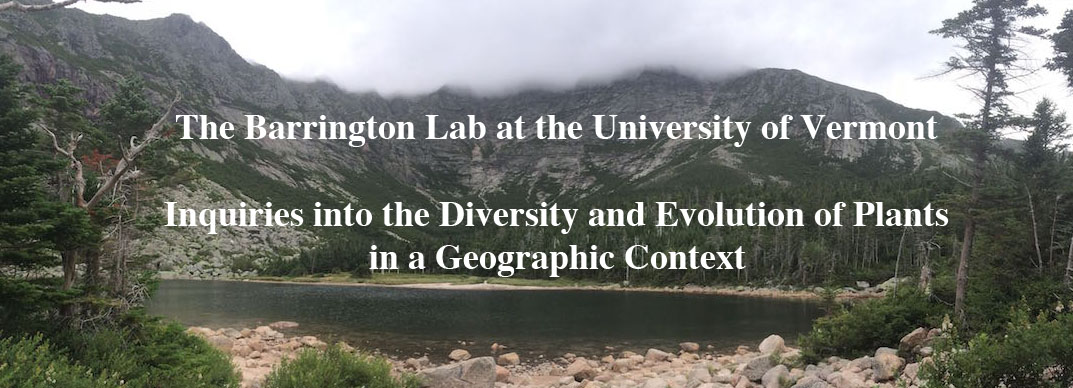
|
I am interested in the diversity and evolution of spore-dispersed plants, especially ferns and clubmosses. My career-long fascination has been with the biogeography and diversification of these plants and the ecological and geological variables that determine these patterns. I have for five decades been exploring the origins of diversity via hybridization and polyploidy as well as through primary divergence. For many years here at the
University of Vermont I have been fortunate to be
surrounded by a community of superior scholars and
students working together on an array of inquiries into
the diversity and evolution of spore-dispersed plants,
especially ferns and clubmosses. For the last two
decades, I have enjoyed working in partnership with
Michael Sundue, who while he was assistant curator
dramatically improved the worldwide scope and
activity of the Pringle Herbarium worked with me to
train some of the best students to ever work on
systematics at UVM.
Though we usually have worked on
ferns (notably Adiantum, Athyrium, Dryopteris, Grammitidaceae,
Matteuccia, Polystichum,
Phegopteris, Pleopeltis,
Rumohra, Polypodium, and Thelypteridaceae) and
Lycophyes (Huperzia and Phlegmariurus),
we have been known to work on flowering plants
(including Attalea, Carex, and Lathyrus)
as well. All of our more recent projects include
molecular genetic analysis of the plants: our data sets
have included an array of chloroplast and nuclear DNA
markers. In the last few years, we have added
target-capture sequences to our array of data, at first
for phylogenetic analysis and now for analysis of
genomic constitution of hybrids and polyploids. At the same time, I am deeply
interested in the evolution of plant structures, so
working together with the people here I have
developed a number of tools for representing plant
structural features and analyzing them phylogenetically.
A particular fascinationof mine is with the
morphometrics of spore size and shape. Now, in 2023, it is a time of
transition at UVM and the Pringle Herbarium. I
look to be promoted to emeritus in July, after which I
will devote full time to my research program, to the
three PhD students remaining in our lab, and supporting
the new generation of systematists here at the Pringle
Herbarium. My fervent hope is to provide some real
insight into the systematics and evolution of Polystichum
near and above treeline in the tropical Andes in the
time remaining to me. |